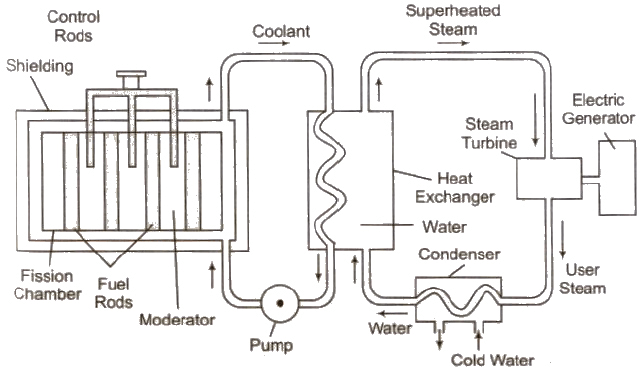

Primary coolant system showing reactor pressure vessel (red), steam generators (purple), Pressurizer (blue), and pumps (green) in the three coolant loop Hualong One design

Primary coolant is in orange and the secondary coolant (steam and later feedwater) is in blue. Design Pictorial explanation of power transfer in a pressurized water reactor. Also in 2020, the Energy Impact Center introduced the OPEN100 project, which published open-source blueprints for the construction of a 100 MW electric nuclear power plant with a PWR design. company to receive regulatory approval from the Nuclear Regulatory Commission for a small modular reactor with a modified PWR design. In 2020, NuScale Power became the first U.S. The first AP1000 and EPR reactors were connected to the power grid in China in 2018. The pressurized water reactor has several new Generation III reactor evolutionary designs: the AP1000, VVER-1200, ACPR1000+, APR1400, Hualong One, IPWR-900 and EPR. Watts Bar unit 2 (a Westinghouse 4-loop PWR) came online in 2016, becoming the first new nuclear reactor in the United States since 1996. The partial meltdown of TMI-2 in 1979 essentially ended the growth in new construction of nuclear power plants in the United States for two decades. Three Mile Island Nuclear Generating Station initially operated two pressurized water reactor plants, TMI-1 and TMI-2. The United States Army Nuclear Power Program operated pressurized water reactors from 1954 to 1974. Rickover that a viable commercial plant would include none of the "crazy thermodynamic cycles that everyone else wants to build". The first purely commercial nuclear power plant at Shippingport Atomic Power Station was originally designed as a pressurized water reactor (although the first power plant connected to the grid was at Obninsk, USSR), on insistence from Admiral Hyman G. Follow-on work was conducted by Westinghouse Bettis Atomic Power Laboratory. In the US, they were originally designed at the Oak Ridge National Laboratory for use as a nuclear submarine power plant with a fully operational submarine power plant located at the Idaho National Laboratory. Several hundred PWRs are used for marine propulsion in aircraft carriers, nuclear submarines and ice breakers. History Rancho Seco PWR reactor hall and cooling tower (being decommissioned, 2004) France operates many PWRs to generate the bulk of its electricity. Russia's VVER reactors are similar to US PWRs, but the VVER-1200 is not considered Generation II (see below). PWRs currently operating in the United States are considered Generation II reactors. PWRs were originally designed to serve as nuclear marine propulsion for nuclear submarines and were used in the original design of the second commercial power plant at Shippingport Atomic Power Station.

Most use anywhere from two to four vertically mounted steam generators VVER reactors use horizontal steam generators. All light-water reactors use ordinary water as both coolant and neutron moderator. In contrast to a boiling water reactor (BWR), pressure in the primary coolant loop prevents the water from boiling within the reactor. The steam then drives turbines, which spin an electric generator. The heated, high pressure water then flows to a steam generator, where it transfers its thermal energy to lower pressure water of a secondary system where steam is generated. In a PWR, the primary coolant ( water) is pumped under high pressure to the reactor core where it is heated by the energy released by the fission of atoms. PWRs constitute the large majority of the world's nuclear power plants (with notable exceptions being the UK, Japan and Canada). An animation of a PWR power station with cooling towersĪ pressurized water reactor ( PWR) is a type of light-water nuclear reactor.


 0 kommentar(er)
0 kommentar(er)
